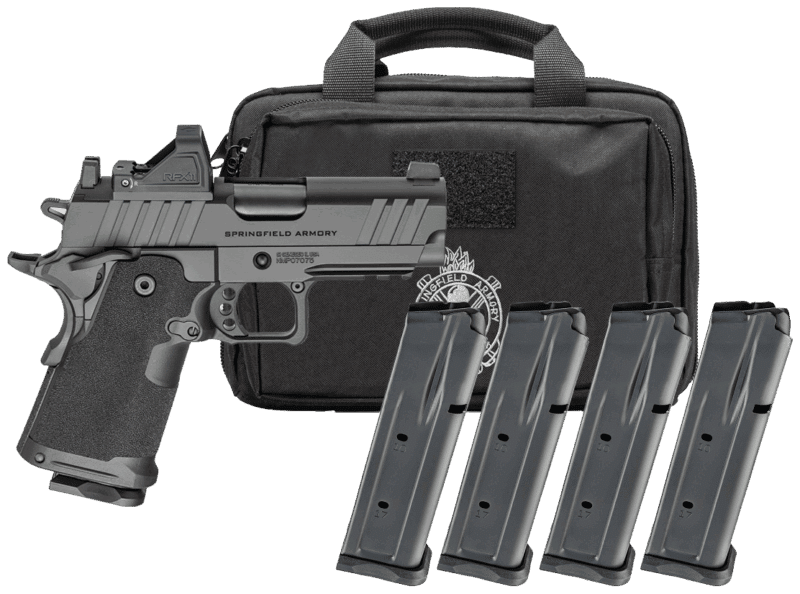G.I. Ingenuity: M1 Garands Firing Mortar Shells
September 23rd, 2025
8 minute read
American infantrymen were always looking for additional firepower, particularly the kind they could easily carry into battle. After the breakout from Normandy, U.S. infantrymen found themselves in more and more close-quarter actions, frequently clearing their German opponents from fortified positions in house-to-house fighting.
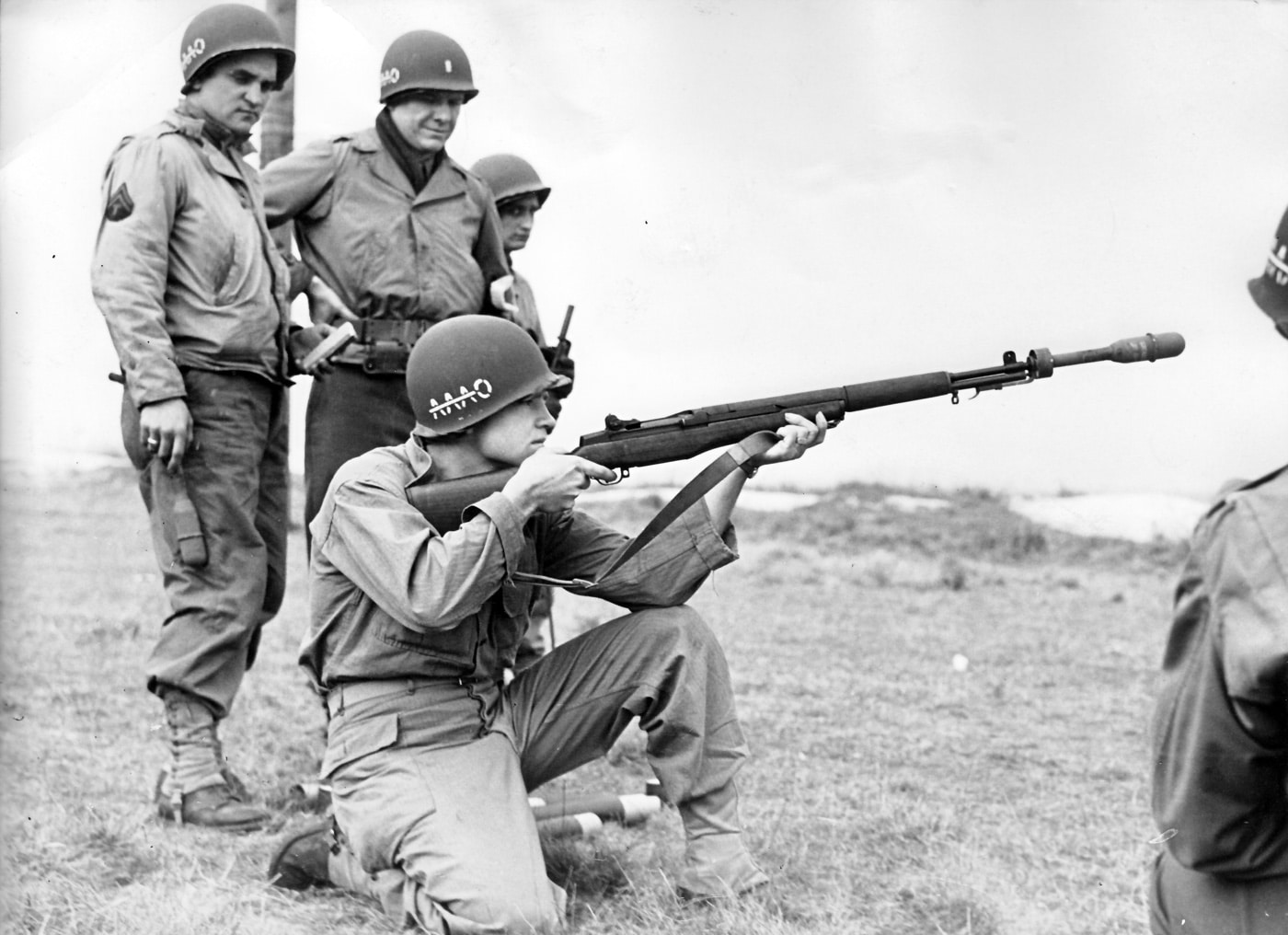
Grenades, both hand and rifle launched, were well-respected and time-honored offensive weapons. But hand grenades offered a very limited range, and rifle grenades provided little punch. The 2.36-inch M1A1/M9/M9A1 Bazooka gave the G.I.s a measure of “portable artillery” with its 3.5-pound High Explosive Anti-Tank (HEAT) round that proved quite useful against German field works and machine gun nests. However, there were never enough Bazookas available to meet the demand, their range and accuracy was poor (about 50 yards maximum), and there was little fragmentation effect from the rocket warhead.
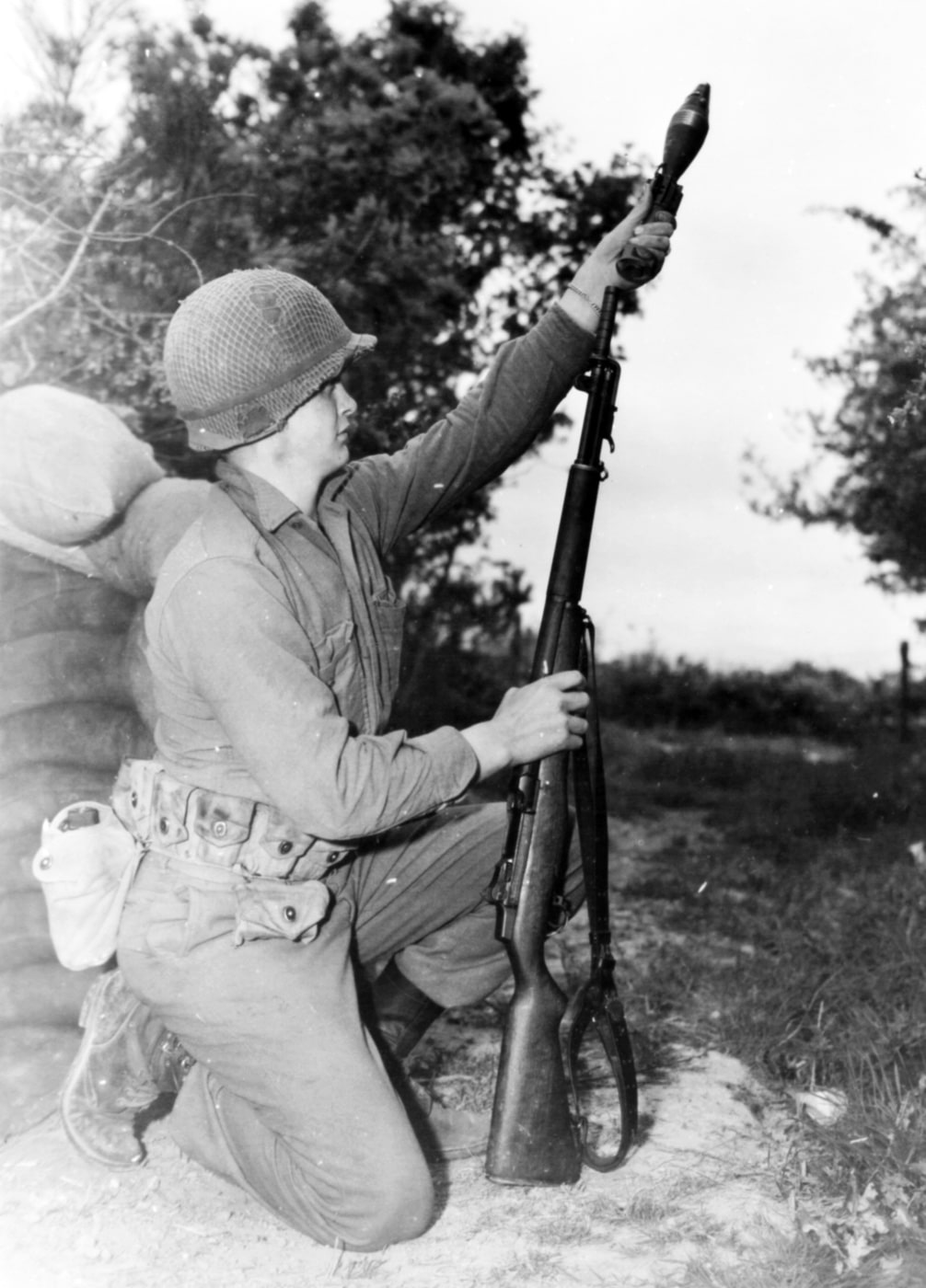
The G.I.s in Western Europe were looking for something more — a weapon that offered more than a grenade, but less than artillery. They found an answer with the ammunition for the M2 60mm mortar.
An Explosive Innovation
In the March 2, 1945, edition of Yank, the Army weekly magazine, reporter Sgt. Mach Morriss talked with a company commander of the 83rd Infantry Division about an effective G.I. innovation:
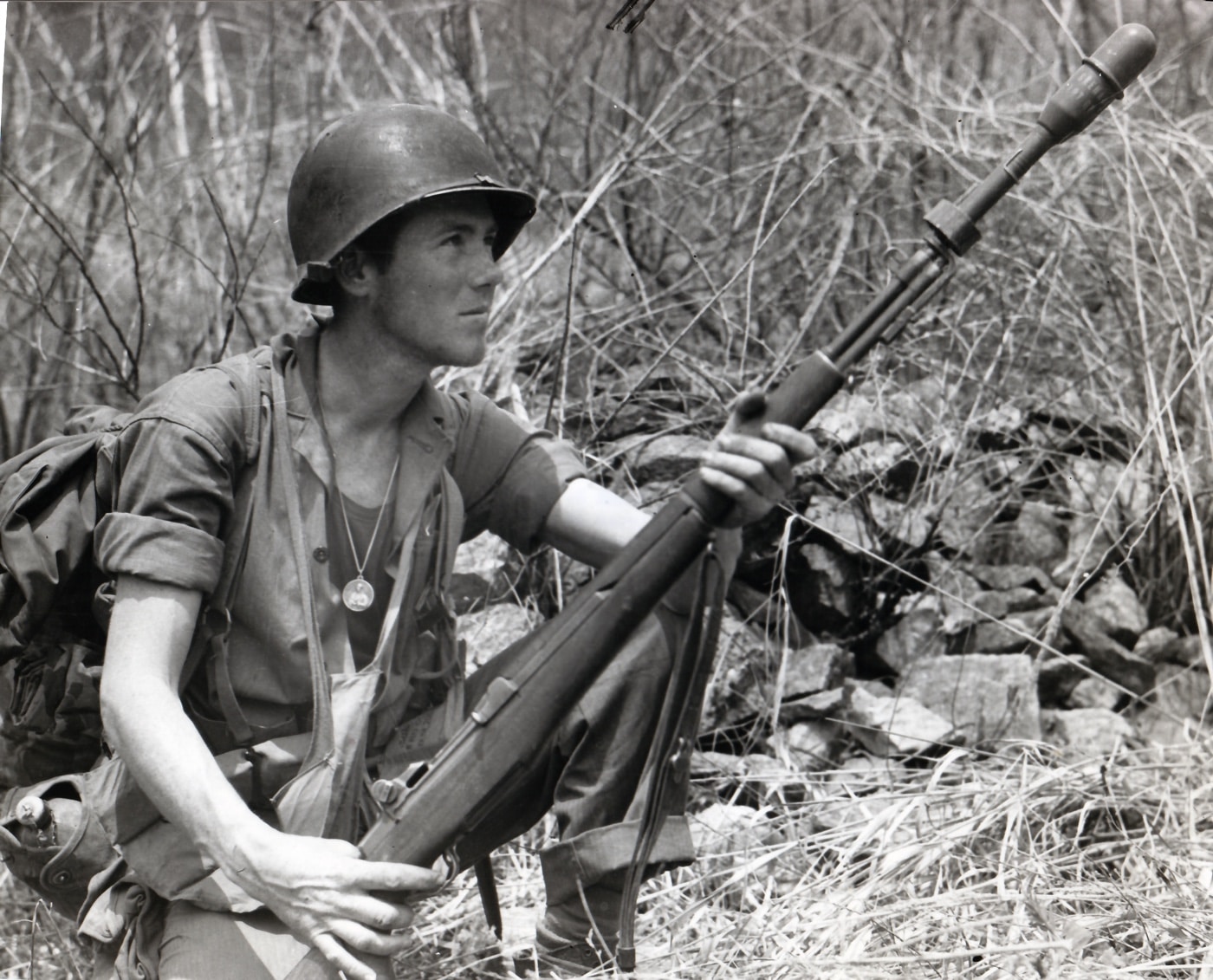
“He certainly enlightened me on one thing. He said that there were times, in house-to-house fighting particularly, when we needed a weapon somewhere between the hand grenade and the bazooka. He said the bazooka projectile would sometimes fail to explode if it hit too light an object, or if it didn’t hit solidly and then scooted along the ground. We needed a weapon to blowout doors and to shoot through windows, spraying a room with shrapnel.
“Now, the men of A Company do not claim credit for originating this idea, but they have put it into practice and say it works like a charm. They take a 60mm mortar shell and remove the increments. Then they take a hand-grenade adaptation and fit the fins of the mortar shell into the prongs on the adaptation and wire them securely together. Fired as a regular hand grenade from a rifle, this gives a flat trajectory range of approximately 135 yards and an arch range of 300 to 400 yards. The range is increased by elevating the rifle; it is also increased by putting the butt of the rifle against the floor, thereby lessening the kick.
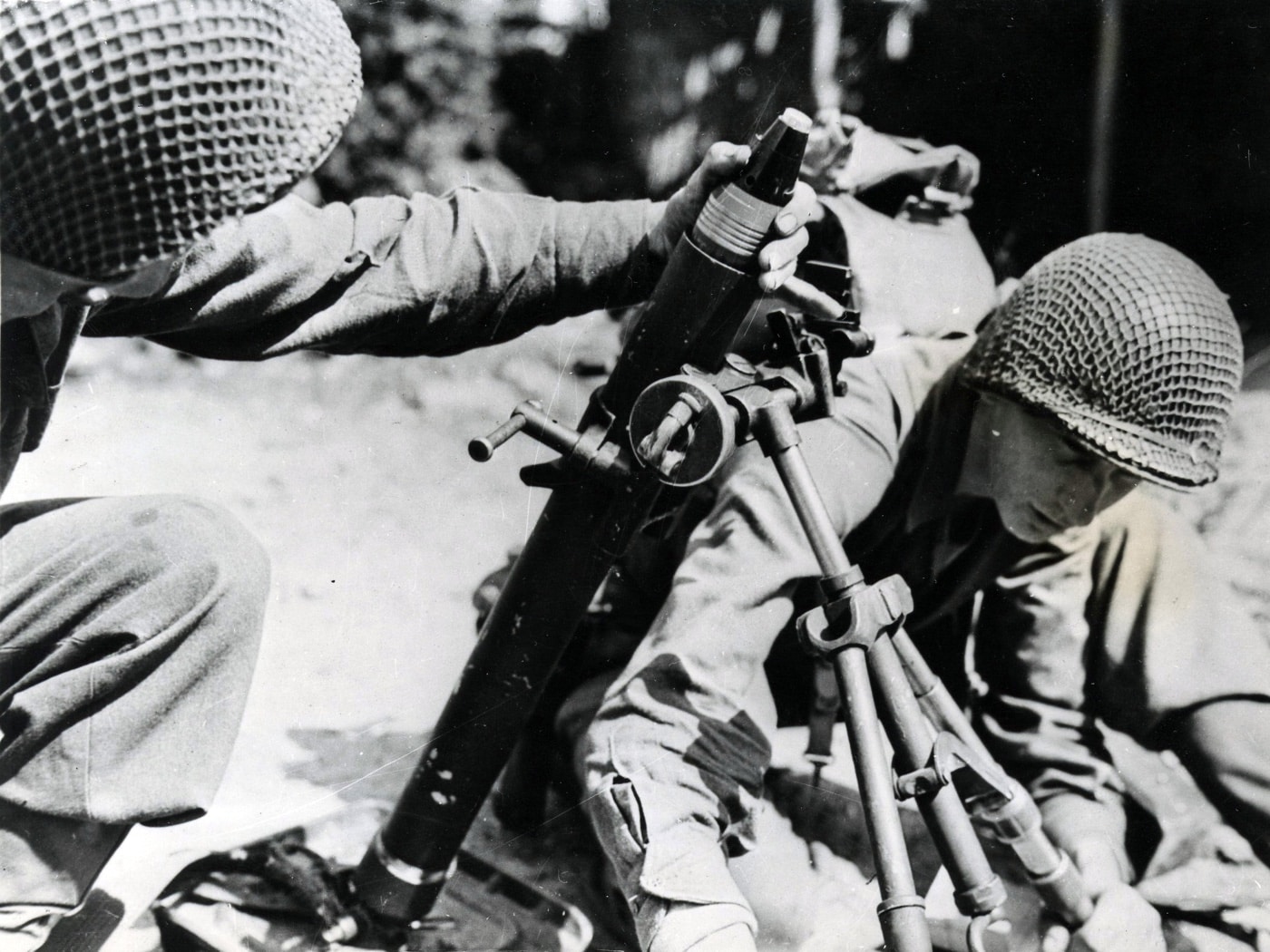
“With this arrangement, every rifleman is a potential mortarman and A Company goes into action with three mortar shells to each squad, bringing the mortar to the very front line. When the Infantry runs out of mortar shells, they borrow from the mortar squad. This saves bazooka projectiles.
“They started using the new gadget at Mariadorf around Nov. 22, and it did a lot of work at Stavelot. ‘The Germans didn’t know what the hell they were getting there for a while,’ the CO said. ‘I assume they do now.’”
The Components
The U.S. Ordnance description of the Grenade Launcher M7 is as follows:
“The Grenade Launcher M7 is used to fire rifle grenades from the Rifle, Caliber .30 M1, using the Cartridge, Rifle Grenade, Caliber .30, M31 as the means of propulsion. The rifle with launcher attached will fire A.T. Grenades M9 and M9A1; A.T. Practice Grenades M11 and M11A1; Rifle Practice Grenade M11A2; Rifle Impact Fragmentation Grenade M17 (formerly the T2), and, when used with the Adapter M1, the Mk. II Fragmentation Grenade.
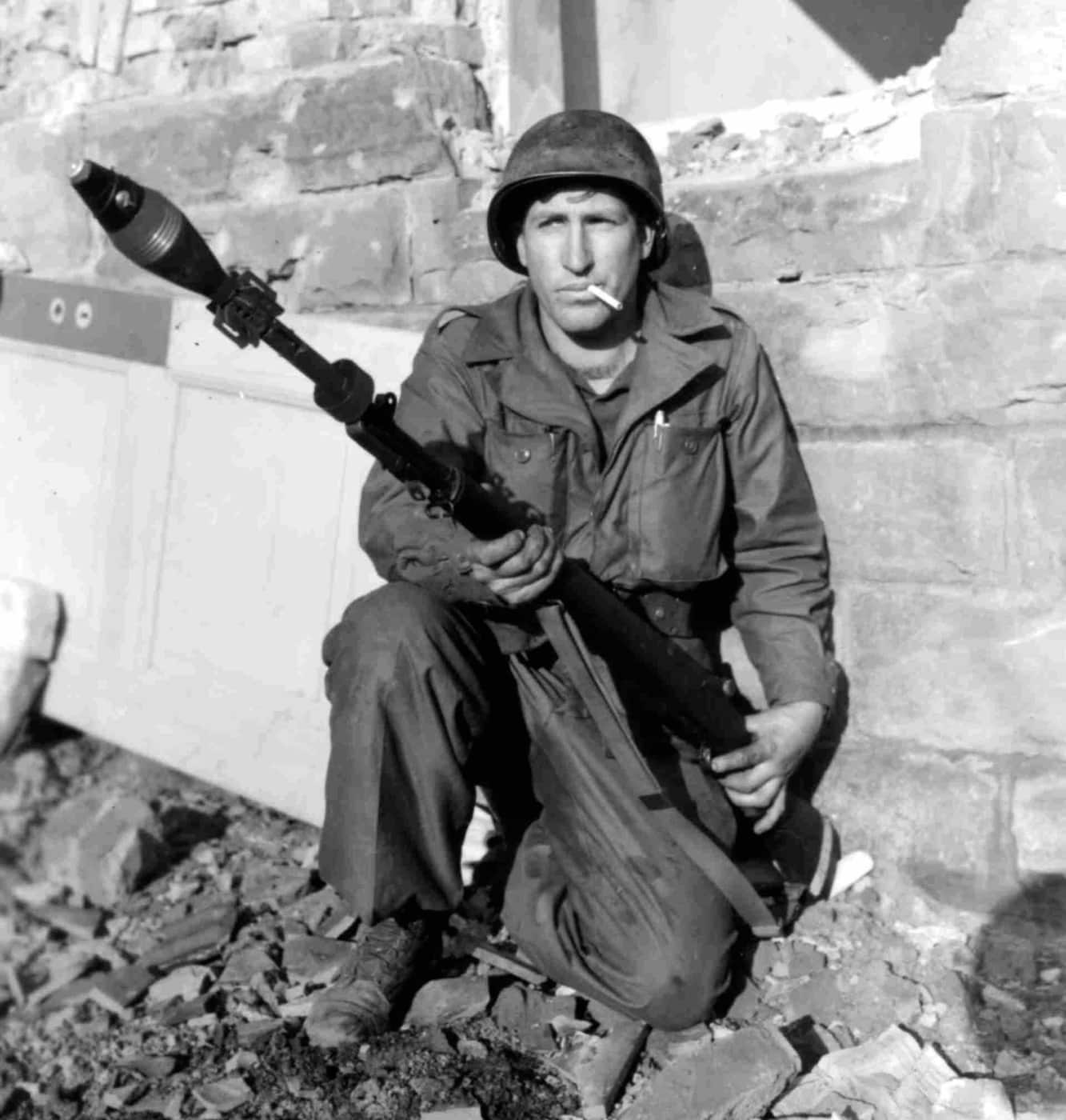
“The launcher is secured to the rifle by a latch -which clamps behind the bayonet lug. A stud on the launcher protrudes into the valve screw when the launcher is assembled. The launcher body has six graduations for different ranges. A grenade retainer spring slightly larger in diameter than the launcher body, serves to hold the grenade in its proper position on the launcher.
“Service ammunition may be fired from the cartridge clip when the grenade launcher is in place. Since the valve is then open, full recoil is impossible, and the rifle can only be operated as a single shot weapon. The launcher weighs 12 ounces, is 7 ½ inches long, and has a bore of ½ inch.”
The 60mm Mortar Shell
Two types of 60mm high explosive shells were used. The first was the M49A2 high explosive, using the “point detonating fuse M52B1”. The total weight of the shell was 2.73 lbs., with 0.34 lbs. of TNT filler.

The second was the M49A3 high explosive, using the “super-quick point detonating fuse M525”. The total weight of the shell was 3.05 lbs., with 0.34 lbs. of TNT filler.
The Mechanics
The following description of the assembly process comes from the U.S. Army ETO publication “Battle Experiences”, provided by Corporal A. Mead, Company G, 271st Infantry Regiment:
1. General: “We fire the 60mm mortar shell, high explosive, from the M1 rifle by means of the grenade launcher M-7 and an improvised adapter. We have found this device to be more accurate than wiring the mortar shell to a grenade adapter because of the increased steadiness of the shell.”
2. Description: “The adapter consists of a metal cylinder about five inches long and open on one end so that it slips over the grenade launcher. On the closed end is a stud which fits snugly into the cartridge well of the 60mm mortar shell. Our ordnance personnel manufactured the adapters from light scrap metal.”
3. Use: “Remove the increments and cartridge from the 60mm mortar shell and insert the stud securely into the cartridge well. Place the adapter on the grenade launcher, pull the safety pin and fire. Best results are obtained from the kneeling position with the rifle butt resting on the ground. An angle of 45 degrees will give a maximum range of 125-150 yards.”
Since the modification was absolutely non-standard, and had not been tested or approved by U.S. Army command staff, the folks from the ETO Ordnance Section felt compelled to comment:
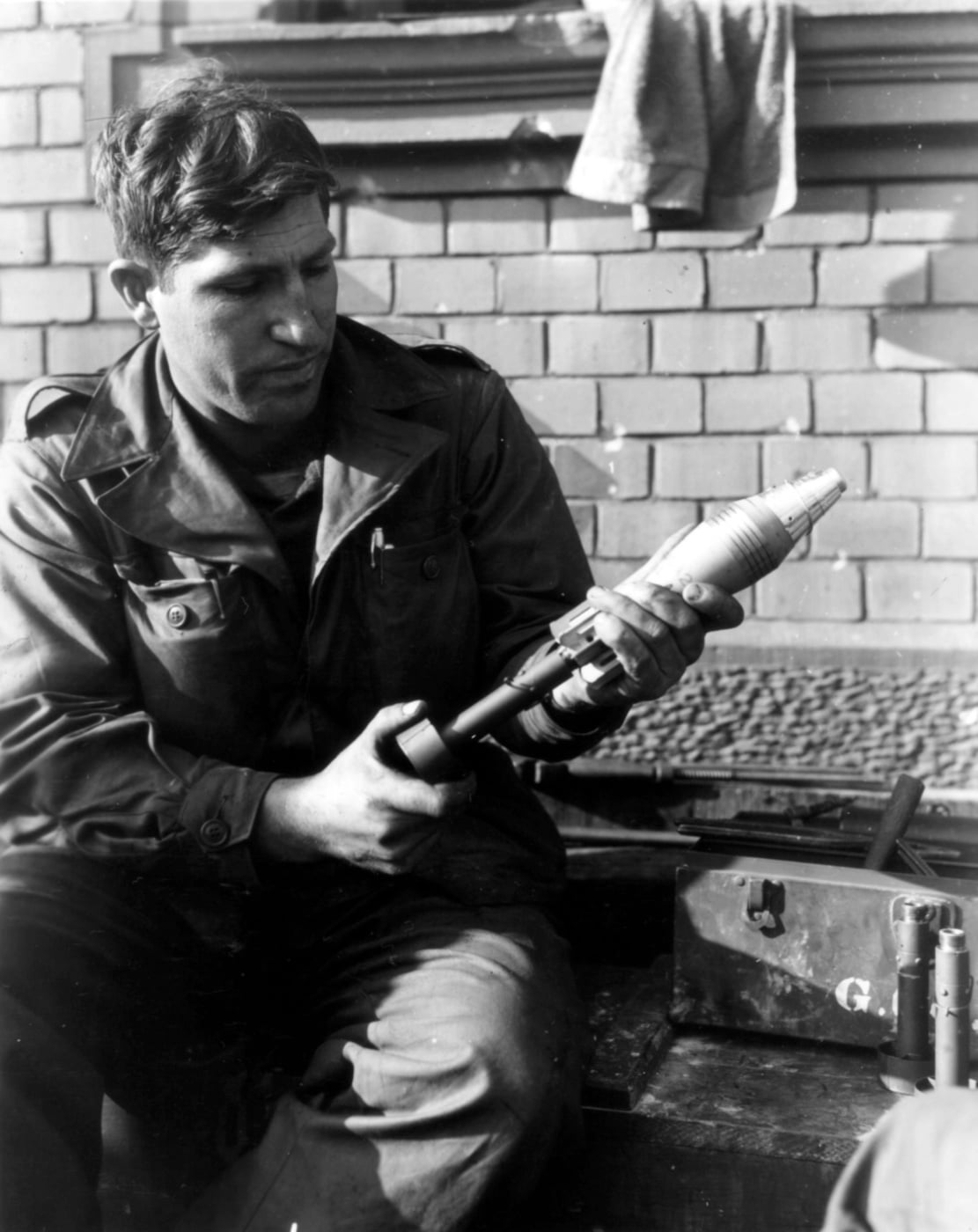
“Note: The Ordnance Section, European Theater of Operations, in general considers unorthodox employment of ammunition to be dangerous and recommends that this device be used only in an emergency.”
A later issue of “Battle Experiences” from the spring of 1945, carried this unattributed description of the 60mm mortar round conversion into a rifle grenade. Note the relatively high “dud-rate”.
With grenade adapter M1:
A. The 60mm mortar shell (high explosive) may be fired from the M1 rifle by means of the grenade launcher M7 and the fragmentation grenade adapter. Six inches of wire per shell and a pair of pliers are the only additional materials needed.
B. The preparation is as follows: (1) “Remove increments from mortar shell. (2) Bend outward the finger of the grenade adapter designed to receive the fragmentation grenade’s handle. (3) Insert the fins of the mortar shell into the fingers of the grenade adapter, thus securing the shell to the adapter.
C. The rifle normally is fired from the kneeling position with the butt resting on the ground. An angle of 45° will give a maximum range of 100 to 110 yards, 60° will give 85 yards range, 70° will give 60 yards range. Low angle fire can also be used and is often fired into thick hedgerow foliage to produce tree bursts. (Note: The safety pin must be pulled before firing.)
D. Due to the relatively low force exerted by the rifle grenade cartridge, the fuse will sometimes not arm and the shell will be a dud. This is especially true of low-angle fire, which will produce about 23% duds.
E. Accuracy has been improved using a sight improvised by the division ordnance company. It is attached to the stacking swivel and establishes the angle of elevation. Direction is obtained by sighting over the barrel.
U.S. Ordnance Takes Its Shot
Apparently, word had gotten back to stateside ordnance about the 60mm mortar/rifle grenade modification.

During the late spring of 1945, U.S. Ordnance created a publication titled “Weapons for Jungle Warfare”, and there is a listing for a (almost) standardized version of G.I. modification:
Shell 60 MM, with M17 Stabilizer Assembly: This is an assembly by which a standard rifle may be made to serve some of the purposes of the 60mm mortar. It makes use of the standard 60mm (M49 type) shell, including the super-sensitive PD fuse, M52, and the fin assembly. The propelling charge is removed, however, and in place of it, there is screwed into the base of the shell an M17 stabilizer with a 15-grain booster charge and the hand grenade fuse. This shell assembly is fired from a rifle, preferably supported on a stock on a surface which is not extremely hard. At an elevation of 45 degrees, a maximum range of 170 yards has been attained. It is believed, however, that this assembly would be more useful in jungle warfare when fired with a flatter trajectory and with a range of from 50 to 75 yards. This item has not been recommended due to the excessive breakage of rifle stocks in preliminary firings, especially when the rifle butt is placed on hard surfaces.
Conclusion
The last line of that sort-of catalog listing essentially ends the official discussion of the 60mm mortar round/rifle grenade modification becoming a standardized U.S. weapon. Even so, when the G.I.s in the ETO needed an immediate solution to a firepower need, they didn’t ask permission, and they didn’t seek forgiveness. They followed their uniquely American instincts, and improvised a weapon to help bring them victory.
Editor’s Note: Please be sure to check out The Armory Life Forum, where you can comment about our daily articles, as well as just talk guns and gear. Click the “Go To Forum Thread” link below to jump in and discuss this article and much more!
Join the Discussion
Continue Reading
Did you enjoy this article?

 411
411






